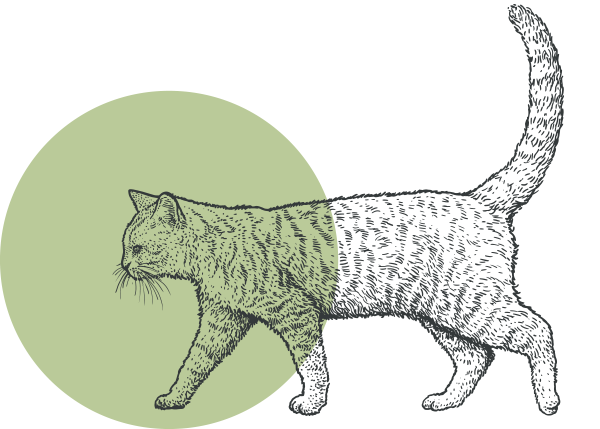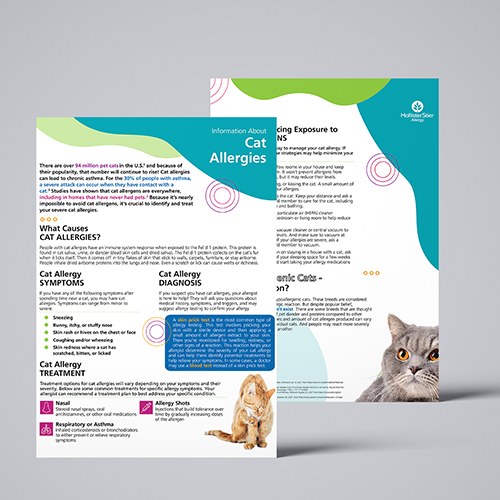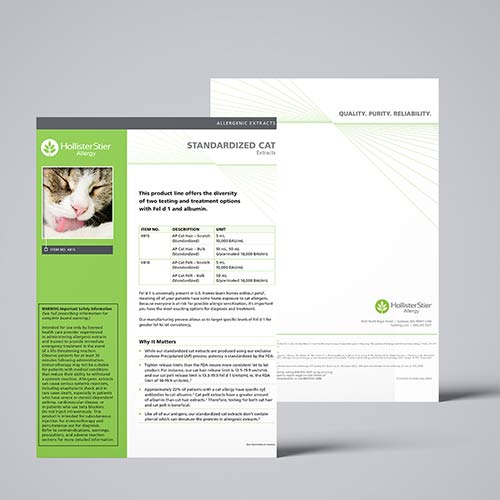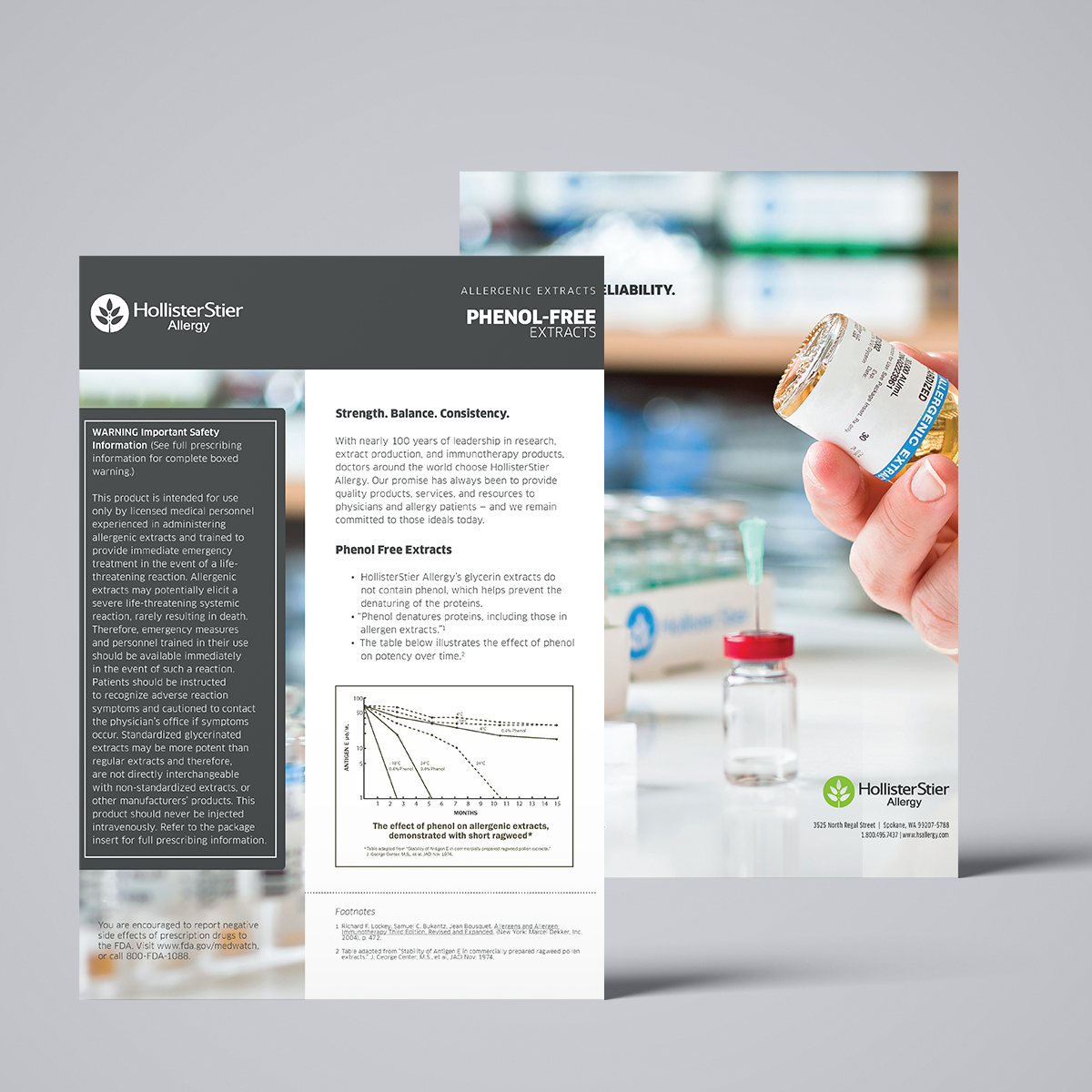Cat Hair and Pelt Extracts
Precise Allergy Management: Standardized Cat Hair and Cat Pelt Extracts
Cat allergens are universally present in U.S. homes. They pose a risk of allergic sensitization to everyone, regardless of pet ownership.¹ Accurate options for diagnosis and treatment are essential in addressing this widespread issue effectively.
Inconsistencies in testing and treatment options can hinder the accuracy of allergy diagnosis and impede successful treatment outcomes for patients.
At HollisterStier Allergy, we understand the challenges healthcare professionals face when testing and treating cat allergies. That’s why our manufacturing process targets specific levels of Fel d 1 for greater lot-to-lot consistency in our product.

Why Choose Our Standardized Cat Hair & Pelt Extracts?
- Thorough Cat Allergy Evaluation: Gain a comprehensive understanding of patients’ allergies by testing with cat hair and cat pelt. This approach is beneficial, as cat pelt extracts contain higher albumin content and address the needs of the approximately 22% of cat allergy patients.²
- Reliable Concentration: Using the exclusive Acetone Precipitated (AP) manufacturing process enables us to target specific levels of Fel d 1 for lot-to-lot consistency, maintaining stricter potency adherence than required by the FDA.4
- No Phenol: Like all of our antigens, our standardized cat extracts do not contain phenol, which can denature proteins in allergenic extracts.3
Choose HollisterStier Allergy’s Standardized Cat Hair and Cat Pelt allergy extracts for precision and consistency in diagnosing and managing cat allergies. With this product in hand you can confidently address the difficulties of cat allergies and deliver optimal care for your patients.
WARNING Important Safety Information (See full prescribing information for complete boxed warning.)
Intended for use only by licensed health care provider experienced in administering allergenic extracts and trained to provide immediate emergency treatment in the event of a life-threatening reaction. Observe patients for at least 30 minutes following administration. Immunotherapy may not be suitable for patients with medical conditions that reduce their ability to withstand a systemic reaction. Allergenic extracts can cause serious systemic reactions, including anaphylactic shock and in rare cases death, especially in patients who have severe or steroiddependent asthma, cardiovascular disease, or in patients who use beta blockers. Do not inject intravenously. This product is intended for subcutaneous injection for immunotherapy and percutaneous use for diagnosis. Refer to contraindications, warnings, precautions, adverse reaction and over dosage for more detailed information.
Related Products
Resources
¹ S.J. Arbes, R.D. Cohn, M. Yin, M.L. Mullenbert, W. Friedman, and D.C. Zeldin. Dog Allergen (Can f1) and Cat Allergen (Fel d1) in US Homes: Results from the National Survey of Lead Allergens in Housing. The Journal of Allergy and Clinical Immunology, 114(1), 111-117 (2004).
² Cox, L., Nelson, H., Lockey, R., Calabria, C., Chacko, T., Finegold, I., Nelson, M., Weber, R., Bernstein, D. I., Blessing-Moore, J., Khan, D. A., Lang, D. M., Nicklas, R. A., Oppenheimer, J., Portnoy, J. M., Randolph, C., Schuller, D. E., Spector, S. L., Tilles, S., & Wallace, D. (2011). Allergen immunotherapy: a practice parameter third update. The Journal of allergy and clinical immunology, 127(1 Suppl), S1–S55. https://doi.org/10.1016/j.jaci.2010.09.034
3 H.S. Nelson. Preparing and mixing allergen vaccines for subcutaneous immunotherapy. R.F. Lockey, S.C. Bukantz, & J. Bousquet (Eds.), Allergens and allergen immunotherapy, 4th ed., p. 315, 2008.
4 Filep S, Tsay A, Vailes LD, Gadermaier G, Ferreira F, Matsui E, King EM, Chapman MD. Specific allergen concentration of WHO and FDA reference preparations measured using a multiple allergen standard. J Allergy Clin Immunol. 2012 May;129(5):1408-10. doi: 10.1016/j.jaci.2011.12.978.






